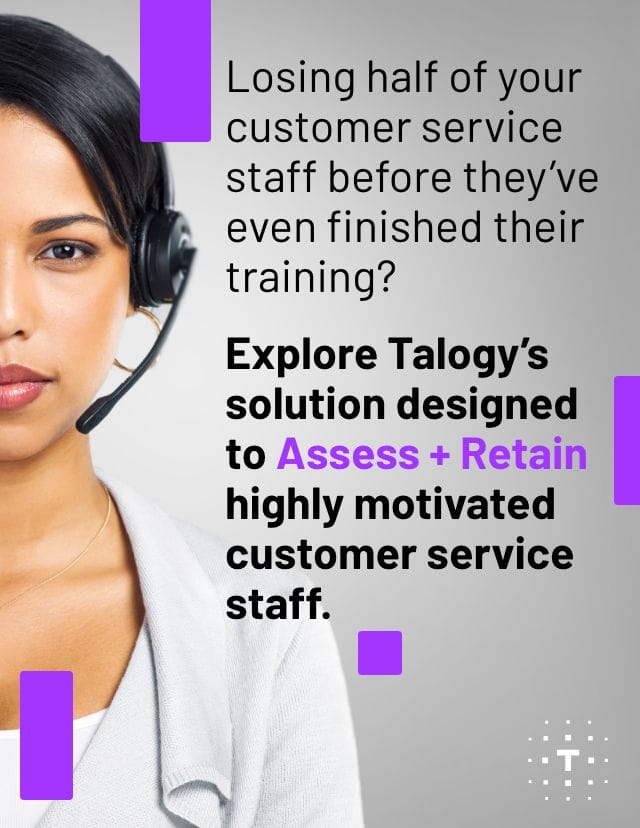Written by Ross Clark, Business Development Manager
In an age when our lives are dominated by Artificial Intelligence and technology – whether it is to create art, help write articles, or assist customers through the use of chatbots – there is still a need for a human element in support roles.
How can a computer programme understand a person’s confusion over a contract? How can it empathise with someone who is struggling to pay their bills during the cost-of-living crisis?
The importance of contact centre employees remains
It is human nature to want to talk through our issues and concerns with someone who can relate. Having a familiar voice on the other end of the phone provides much more comfort and compassion to those in need. You have probably been in a situation where you have an issue that you need resolved and fast. These instances seem to always coincide with getting bogged down trying to navigate the various automated responses on the website, or repeating yourself to the electronic voice on the phone when it is asking for your passcode.
If you’ve ever caught yourself hitting zero or yelling “representative!” into the phone, then you understand why it is key to have skilled customer support agents within your organisation. They are there to assist customers throughout their buying journey, ease their troubles, and resolve any potential issues. However, this is a tough job. Many – if not most – calls are not nice, and often the support staff have to deal with frustrated customers in situations that result in stern words, shouts, and even insults being thrown at them. No one likes to be shouted at, particularly when you are a third party to the situation and not the direct source of their frustration. The reality is that in this role, you endure a lot of negativity and misguided anger.
The biggest challenge of contact centres
So, the question is, how do you ensure that you have a skilled customer support team? And when you do have them, how do you keep a hold of them?
The main challenge within contact centres is attrition. Research has indicated that 53% of customer service agents who report experiencing significant levels of stress are likely to leave their current job in the next six months. These numbers are staggering and paint a grim picture of what life can be like not only for staff in the support role, but for those charged with recruiting and retaining these employees.
Attraction to role is no longer an issue. The current job market freeze has meant fewer roles and in turn, more applications for the roles that are available. But you can’t just expect to hire and then rehire every 12 months. This costs a lot of time and resources year in year out. You need to bring in talent that you can retain.
How to hire the best contact centre employees
It all starts by using a tailored assessment process, which allows you to not only find the most skilled talent for a customer support role, but you are also able to leverage that data output and begin honing their resilience from the very start of their tenure. You can then continually develop it throughout their career within your organisation.
Three key points to keep in mind when hiring contact centre employees are:
- Keep candidates engaged throughout the selection process
- Focus on the WHY and the importance of the role they will be fulfilling
- Level up their resilience as soon as they start through the use of catered developmental sessions
One other important factor when it comes to identifying the best talent for the role: Determine workplace preferences and motivations, and then map those to a competency framework. This creates a greater understanding of the job and the level of organisational fit. When used in conjunction with a specifically designed contact centre situational judgement test, you can sift out the applicants that do not meet the criteria to be successful in the role.
How to combat turnover in contact centres
By following these key hiring steps from the beginning, you are already on your way to increasing retention. Lower turnover can be achieved in part through a resilient worker, but the definition of resilience needs to be adapted from being a single and narrow measure of ‘bouncing back’ between those challenging calls. You can’t do that forever because eventually you will get worn down. In order to combat this, resilience needs to become a broader understanding of how and why a candidate can deploy sustainable resilience strategies at work.
By exploring deeper aspects of resilience, such as purposeful direction and self-belief in the selection process, we gain a better understating of how they are likely to approach the challenges of the role and remain committed in the long-term.
Developing resilience strikes at the heart of the retention issues these roles often face. By hiring more resilient people and helping them develop resilience strategies earlier in their training, your organisation will achieve reduced attrition and greater role satisfaction. And in a world that is becoming more digital by the day, keeping those effective customer support employees in their role will become even more important for those who value a human over a robot.




